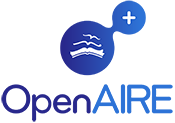EFEKTIFITAS PENGELOLAAN DAERAH PERLINDUNGAN LAUT (STUDI KASUS DESA MATTIRO LABANGENG KABUPATEN PANGKEP)
Abstract
Kata Kunci: CTV, efektivitas, indikator, perlindungan laut, teknik amuba
THE EFFECTIVITY OF MARINE SANCTUARY MANAGEMENT (CASE STUDY OF MATTIRO VILLAGE OF LABANGENG PANGKEP DISTRICT)
ABSTRAK
This paper is assessing management effectiveness in Marine Sanctuary (Daerah Perlindungan Laut or DPL) of Mattiro Labangeng Village-Pangkep Regency. It is showed that impacts and effectiveness of the management process was assessed using indicators, includes biophysical, socio-economic and institution indicators. The results showed that there are positive impacts in some indicators of ecology (corals, fish and benthos), socio-economic and institution. The increasion in percent total of coral cover was followed by the increasing groups of reef fish (indicators, targets, and majors) and benthos organisms in DPL. From economic’s point of views, the economic values of coral reefs resource from fisheries activities before and after DPL were Rp 42,635,910.51/ha/year and Rp 52,084,390.18/ha/year, respectively. Effectiveness of this DPL was shown by graph of Amoeba technique and results of that presented the positive values. The summary is current indicators values were greater than the critical threshold values/CTV.
Keywords: amoeba technique, CTV, effectiveness, indicators, marine sanctuaryFull Text:
PDF (Bahasa Indonesia)References
Adrianto, L (2007). Pendekatan dan metodologi evaluasi program marginal fisheries community development 2004-2006. [Working Paper]. Kerjasama Departemen Manajemen Sumberdaya Perairan, Fakultas Perikanan dan Ilmu Kelautan, Institut Pertanian Bogor dengan Badan Perencanaan Pembagunan Nasional.
Brink Ten, B. J. E., Hosper, S. H., & Colin, F. (1991). A quantitative method for description and assessment of ecosystems: the AMOEBA-approach. Mar. Pollut. Bull., 23, 265–270.
Brown, K., Adger, W. N., Emma, T., Peter, B., David, S., & Kathy, Y. (2000). Trade-off analysis for marine protected area management. Papers Series. CSERGE.
Christie, P. A., & White, E. D. (2002). Starting Point or Solution? Community-based marine protected areas in the Philippines. J. Envir. Manag., 66, 441-454.
[COREMAP-PSTK] Coral Reef Rehabilitation and Mangement Program (2002). Final report: ecological assessment of the Spermonde Archipelago, South Sulawesi. PSTK-Unhas. Sulawesi Selatan.
[COREMAP II-PPTK UNHAS] Coral Reef Rehabilitation and Mangement Program Phase II-Pusat Penelitian Terumbu Karang Universitas Hasanuddin (2006). Rencana pengelolaan terumbu karang (RPTK) Kecamatan Liukang Tupabbiring Kabupaten Pangkep. Sulawesi Selatan.
[COREMAP II-LIPI] Coral Reef Rehabilitation and Mangement Program Phase II-Lembaga Ilmu Pengetahuan Indonesia (2008). Studi baseline terumbu karang di lokasi daerah perlindungan laut Kabupaten Pangkep. Jakarta.
English, S. C., Wilkinson, C. C., & Baker, V. (1997). Survey manual for tropical marine resources (2nd Edition). Asean-Australia Marine Science Project. Australia Institute of Marine Science. Townsville.
Glaser, M. (2003). Interrelations between mangrove ecosystems, local economy and social sustainability in the caete estuary. North Brazil. Wetl. Ecol. Manag., 11, 265-272.
Gomez, E. D., & Yap, H. T. (1988). Monitoring reef condition. In Kenchington, R. A., Bryget, D., & Hudson, E. T. (Editors). Coral reef management handbook. Second Edition. UNESCO Regional Office for Science and Technology for South East Asia. Jakarta.
Jompa, J. (1996). Monitoring and assessment of coral reefs on Spermonde Archipelago, South Sulawesi. Thesis. McMaster-Canada.
Manuputty, A. E. W., & Djuwariah. (2009). Panduan metode point intercept transect (PIT) untuk masyarakat. COREMAP II-LIPI. Jakarta.
Martinez, C. O., Casalduero, F. G., Bayle-Sempere, J. T., Valle, C., Sanchez-Lizaso, J. L., Forcada, A., Sanchez-Jerez, C. B. C. P., Martin-Sosa, P., Falcon, J. M., Salas, F., Graziano, M., Chemello, R., Stobart, B., Cartagena, P., Perez-Ruzafa, A., Vandeperre, F., Planes, S., & Rochel, A. B. E. (2009). A conceptual framework for the integral management of marine protected areas. J. Ocean Coast. Manag., 52, 89–101.
McClanahan, T. R., Mwaguni, S., & Muthiga, N. A. (2005). Management of the Kenyan coast. Ocean Coast. Manag., 48, 901–931.
Odum, E. P. (1994). Dasar-dasar ekologi. Gajah Mada University Press. Yogyakarta.
Pollnac, R., Bunce, L., Townsley, P., & Robert, P. (2000). Socioeconomic manual for coral reef management. Global Coral Reef Monitoring Network (GCRMN).
Pomeroy, R. S., Parks, J. E., & Watson, L. N. (2004). How is your MPA doing? A guide book of natural and social indicators for evaluating marine protected area management effectiveness. IUCN-The World Conservation Union.
Ridaura, S. L., Masera, O., & Astier, M. (2002). Evaluating the sustainability of complex socio-environmental systems the mesmis framework. Ecol. Indic., 2, 135-148.
Russ, G. R., Stockwell, B., & Alcala, A. C. (2005). Inferring versus measuring rates of recovery in no-take marine reserves. Mar. Ecol. Prog. Ser., 292, 1–12.
DOI: https://doi.org/10.21107/jk.v7i2.803
Refbacks
- There are currently no refbacks.

Jurnal Kelautan by Program Studi Ilmu Kelautan is licensed under a Creative Commons Attribution 4.0 International License.
Published by: Department of Marine Sciences, Trunojoyo University of Madura













